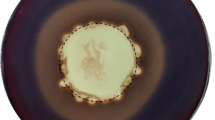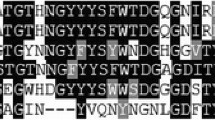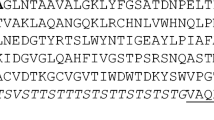Abstract
A xylanase belonging to family 10 is produced by Cryptococcus adeliae, an Antarctic yeast that exhibits optimal growth at low temperature. The mature glycosylated xylanase secreted by C. adeliae is composed of 338 amino acid residues and 26 ± 3 osidic residues, and shares 84% identity with its mesophilic counterpart from C. albidus. The xylanase from C. adeliae is less thermostable than its mesophilic homologue when the residual activities are compared, and this difference was confirmed by differential scanning calorimetry experiments. In the range 0°–20°C, the cold-adapted xylanase displays a lower activation energy and a higher catalytic efficiency. All these observations suggest a less compact, more flexible molecular structure. Analysis of computerized molecular models built up for both psychrophilic and mesophilic xylanases indicates that the adaptation to cold consists of discrete changes in the tridimensional structure: of 53 substitutions, 22 are presumably involved in the adaptation process. These changes lead mainly to a less compact hydrophobic packing, to the loss of one salt bridge, and to a destabilization of the macrodipoles of the helices.
Similar content being viewed by others
Author information
Authors and Affiliations
Additional information
Received: April 20, 1999 / Accepted: January 13, 2000
Rights and permissions
About this article
Cite this article
Petrescu, I., Lamotte-Brasseur, J., Chessa, JP. et al. Xylanase from the psychrophilic yeast Cryptococcus adeliae . Extremophiles 4, 137–144 (2000). https://doi.org/10.1007/s007920070028
Issue Date:
DOI: https://doi.org/10.1007/s007920070028




